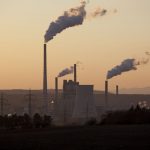What Are the Main Sources of Greenhouse Gas Emissions?
- Categories:
- Climate Change
- Energy
- Food

However, we may not know exactly which sources are responsible for the production of greenhouse gas emissions. In this article, we look at the sectors that are producing the most emissions.
What are greenhouse gas emissions?
Greenhouse gases, often referred to as GHGs, are gases that absorb and emit infrared radiation from the Earth’s surface and therefore contribute to the ‘greenhouse effect’, which is the warming of the Earth’s surface.
Carbon dioxide is the main offender when it comes to GHG emissions, which is why it gets a lot of attention, but there are other gases that are also contributing to global warming. According to data for 2016, 74.4% of global GHG emissions were carbon dioxide, 17.3% were methane, 6.2% were nitrous oxide and 2.1% were lesser known “F-gases” including HFCs, CFCs and SF6.
What are the main sources of greenhouse gas emissions?
For this article, we will mainly be referring to data published by Our World In Data, which relates to global greenhouse gas emissions in 2016 (measured in carbon dioxide equivalents).
Energy (electricity, heat and transport)
The research shows that the majority of greenhouse gas emissions – 73.2% – are caused by energy use. This can be further broken down into the following categories, with percentages referring to the percentage of total GHG emissions:
- Energy use in industry (energy-related emissions from manufacturing): 24.2%
- Transport: 16.2% (the majority coming from road transport, followed by aviation then shipping).
- Energy use in buildings (residential and commercial): 17.5%
- Unallocated fuel combustion 7.8%
- Fugitive emissions (accidental leakage) from energy production: 5.8%
- Energy use in agriculture and fishing 1.7%
Food production
The Our World in Data research reveals that 18.4% of total GHG emissions are directly caused by agriculture, forestry and land use. However, they note that the total emissions involved in food production – including refrigeration, food processing, packaging, and transport – equal approximately 26%, including emissions covered in other categories.
Within this sector as a whole, the production of emissions can be broken down into the following categories:
- Livestock & fisheries account for 31% of food production emissions.
- Crop production accounts for 27% of food production emissions.
- Land use accounts for 24% of food production emissions.
- Supply chains account for 18% of food production emissions.
Direct industrial processes
Approximately 5.2% of total global GHG emissions are caused as a byproduct of certain industrial chemical processes, such as the production of cement and the production of ammonia for cleaning supplies and other materials.
Waste
Finally, 3.2% of GHG emissions in 2016 were caused by waste, which is where the decomposition of waste products directly produces methane and nitrous oxide. These are primarily caused by wastewater and landfills.
Research reveals new and unexpected sources
These estimates on greenhouse gas emissions are based on data from 2016 and probably give us a fairly accurate picture of which sources are most responsible. However, it’s important to remember that research and data collection in this area is ongoing.
In fact, new data can often reveal surprising sources of greenhouse gas emissions, compared to the conception that many of us have. For example, a recent landmark study found that the practice of bottom trawling by fishing boats releases as much carbon dioxide as the entire global aviation industry.
This practice, where heavy duty nets are dragged along the seabed, causes 1 gigaton of carbon every year. The report is thought to be the first to show the climate impact of trawling on a global scale.
How do we reduce greenhouse gas emissions?
Although the COVID-19 pandemic curbed carbon emissions in 2020 – they fell by 6.4% – this was not as significant as many expected and shows the scale of work that we need to do to reduce global GHG emissions.
The world’s wealthiest produce double the combined carbon emissions of the poorest 50%.
The analysis of the main sources of greenhouse gas emissions show that the main areas we need to focus on are energy (primarily industry and transport) and global food production.
The key solutions that have frequently been spoken about in recent years remain vital: we need to see a shift towards low-carbon electricity and mainly renewable energy sources. We also need to reduce meat and dairy production by encouraging more people to adopt plant-based eating where possible, and promote lower-carbon meat and dairy production.
It’s also worth mentioning here that the world’s wealthiest produce double the combined carbon emissions of the poorest 50%, according to a report by the UN. Moreover, the wealthiest 5% of the world, referred to as the “polluter elite” contributed 37% of emissions growth between 1990 and 2015. It therefore falls on the shoulders of the wealthiest and most powerful people in the world to reduce global carbon and GHG emissions.
You can support the work that is being done by charities to combat the effects of climate change and support those negatively impacted by global warming through SearchScene. We are a charitable search engine that donates 95% of profits to charity.










